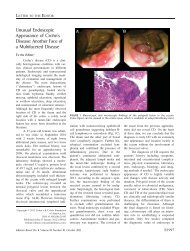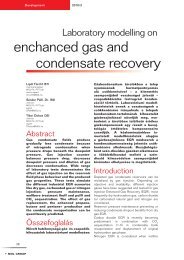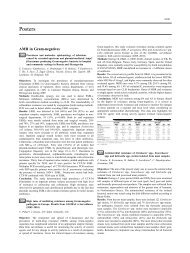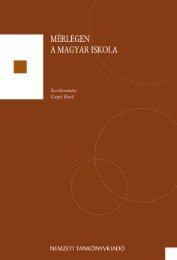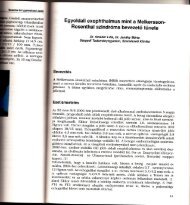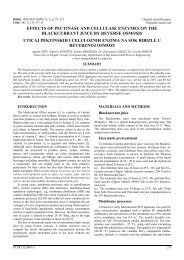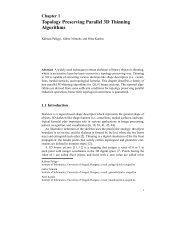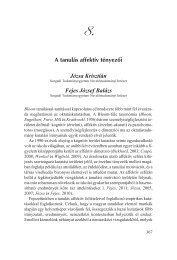View - ResearchGate
View - ResearchGate
View - ResearchGate
Create successful ePaper yourself
Turn your PDF publications into a flip-book with our unique Google optimized e-Paper software.
obtained if the turbidity of the spore suspension was measured spectrophotometrically in the<br />
case of black moulds.<br />
The differences in MIC values obtained by comparison of the Etest and the agar<br />
dilution methods were similar for the evaluated Trichoderma strains (Table IV). The MICs for<br />
fluconazole did not differ markedly with these methods, but they did differ by 1 or 2 steps of<br />
2-fold dilutions from the data in the literature obtained by broth dilution methods. The MICs<br />
for amphotericin B were higher by 1 or 2 steps of 2-fold dilutions with the agar dilution<br />
method.<br />
In conclusion, these data indicated differences between the susceptibility testing<br />
methods for moulds. The agar dilution method was not the most appropriate for the<br />
susceptibility testing of moulds in routine laboratory use, because the exact results depended<br />
on numerous features (e.g. the stability of the solution of antimycotics, the mixing of the stock<br />
solutions into the agar medium, the growth rate of the moulds, etc.). The Etest is easier to<br />
perform: it is less labour-intensive and much simpler to set up than the broth microdilution or<br />
agar dilution methods [2, 15] and it provides the flexibility to test antifungal agents against<br />
different moulds [14].<br />
Acknowledgements.This study was supported in part by grant OTKA F037663 of the<br />
Hungarian Scientific Research Fund. We thank Pfizer for supplying the Etests.<br />
9



